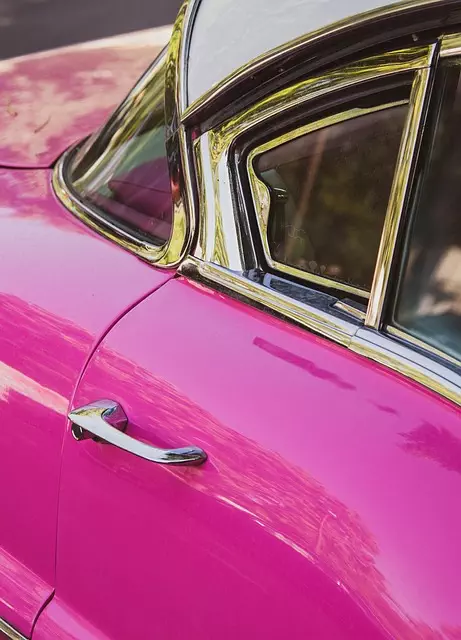Sound deadening is essential for comfortable driving and reducing noise pollution in bustling cities like Toledo. DIY enthusiasts can use acoustic foam and other materials for an accessible solution, but professional installation offers superior results with tailored treatments for customized audio systems or improved ride comfort. Our guide provides a comprehensive step-by-step process for DIY sound deadening, while professional services leverage advanced foams and vibration-absorbing mats to address unique acoustic challenges, ensuring the best outcomes for quiet, comfortable rides in Toledo.
“Uncover the secrets to transforming your vehicle’s interior with floor sound deadening—a game-changer for any car audio enthusiast. This comprehensive guide delves into the art of minimizing unwanted noise, enhancing your driving experience. From DIY car sound deadening Toledo projects for budget-conscious individuals to exploring professional installation techniques, we’ve got you covered. Learn how to navigate this process, from understanding the basics to implementing effective solutions like car sound deadening Toledo, ensuring a quieter and more immersive journey.”
- Understanding Floor Sound Deadening: The Basics
- DIY Car Sound Deadening Toledo: Step-by-Step Guide
- Professional Sound Deadening Installation: Benefits and Best Practices
Understanding Floor Sound Deadening: The Basics
Sound deadening is a process that aims to reduce unwanted sound transmission and echo within enclosed spaces, such as vehicles or rooms. When it comes to cars, particularly those with vibrant or bustling interiors, effective sound deadening becomes essential for several reasons. One of the primary goals is to enhance the overall driving experience by creating a calmer, quieter environment for both passengers and drivers. This is especially relevant in cities with heavy traffic, where noise pollution can be a significant concern.
For DIY enthusiasts, car sound deadening Toledo offers a creative solution. By utilizing specialized materials like acoustic foam or soundproof mats, one can mitigate resonances and reflect sound waves, resulting in a quieter cabin. Professional installation, on the other hand, ensures optimal performance and a seamless fit. This method involves strategic placement of sound-absorbing panels and insulation to treat problem areas effectively. Whether it’s for custom car audio systems or simply improving ride comfort, understanding the basics of floor sound deadening is key to achieving a quieter, more peaceful space.
DIY Car Sound Deadening Toledo: Step-by-Step Guide
Thinking about DIY car sound deadening Toledo? You’re in luck! Deadening your car’s interior is an accessible and effective way to reduce unwanted noise, improve clarity for music, and create a more comfortable ride. This step-by-step guide walks you through the process, empowering you to transform your vehicle into a calmer, quieter space without breaking the bank.
We’ll start by assessing your car’s specific needs. Different vehicles have varying levels of sound transmission, so identifying problem areas is key. Next, we’ll outline the essential materials for DIY installation—from sound-absorbing mats and adhesive to tools you likely already own. Then, follow a clear, illustrated process that breaks down each step, ensuring professional results without needing an expert. Learn how to strategically place deadening materials for maximum impact while avoiding common pitfalls. By the end, your Toledo will be transformed into a quieter, more serene driving machine—all thanks to your DIY car sound deadening efforts.
Professional Sound Deadening Installation: Benefits and Best Practices
Professional Sound Deadening Installation offers a multitude of benefits for both automotive and interior applications. When done correctly, it significantly reduces echo and reverberation, enhancing the overall acoustic experience in vehicles or spaces. For car sound deadening Toledo residents might consider, professionals employ specialized materials and techniques tailored to specific needs. These include advanced foam insulation, vibration-absorbing mats, and precise placement of deadening materials to target problem frequencies.
Best practices for professional installation involve thorough preparation: ensuring the surface is clean, dry, and free from contaminants. Accurate measurement and cutting of materials are crucial, followed by meticulous application to avoid air gaps or misalignments. Using high-quality products and adhering to manufacturer guidelines ensures optimal performance and longevity. DIY car sound deadening can be effective, but professional installation guarantees a quieter, more refined result, particularly for vehicles like those in Toledo with unique acoustic challenges due to their design and environment.


